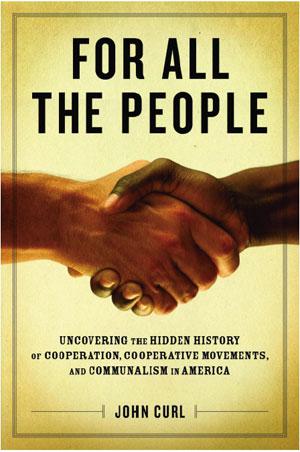Uncovering History of Cooperatives, Labor and Communities

John Curl has documented a part of America’s cooperative history that few of us are aware of. This book was clearly a labor of love and the result of extensive research into the history of the organizations, political movements, and progressive thinkers who tried to find a way to avoid marginalization of their fellow citizens in an economic system that valued capital over labor.
That being said, it is far from a complete history of cooperation. Curl’s interests and the book’s emphasis are primarily the role of cooperative efforts within the labor movement and the empowerment of workers that had been or would have been disenfranchised in the dominant industrial economy. This is both the book’s weakness and strength. The role of cooperatives in early America and in conjunction with labor unions has never been so well explicated.
How many of us knew that industrial labor unions routinely formed cooperatives to employ factory laborers who were locked out during strikes? That antitrust law was used more often to destroy successful cooperatives than to break up industrial monopolies? I would recommend this book to anyone interested in the evolution of cooperatives or the labor movement for these insights alone.
Where the book falls short of expectations is in the analysis of why so many cooperative efforts failed. Political considerations and collusion by corporate competitors all played a role. Yet we are left wondering why almost none of these early efforts succeeded for more than a few years. Internal strife, philosophical differences, and structural weakness played major roles, and the reader is left wondering whether the idealism of self-empowerment is somehow related to the inability of cooperatives to rally behind a vision and mission that bonds its members more firmly than mere self-interest.
This is a question that continues to resonate for our cooperative development today.
For All the People barely skims the surface of the consumer co-op movement and the modern era. Other authors have covered this territory, however, and the book probably is stronger without it. Curl does mention the food co-ops that continue to operate as worker collectives, but there is no real discussion of the trade-off between consumer vs. worker empowerment and how modern co-ops attempt to serve both.
There is a wealth of fascinating history here, much of it presented in short, encyclopedic entries. The writing style does not engage the reader in a story, it provides details and data. When I began reading, I was immediately drawn in to the fascinating history of cooperatives, but when many of the cooperative organizations were presented only through dates, names and basic structures, I struggled to maintain interest.
I can unequivocally recommend this book as a reference tool and historical timeline of cooperation; however, I would have liked to see a deeper analysis of the impact these early co-ops had, why so many had short lives, and what lessons we can take from this history to strengthen the modern cooperative movement. This is a book that every student of cooperatives will want to read and one that can certainly stimulate debate and conversation about cooperative structures, impacts, and success.







